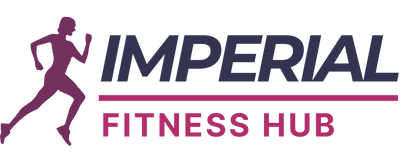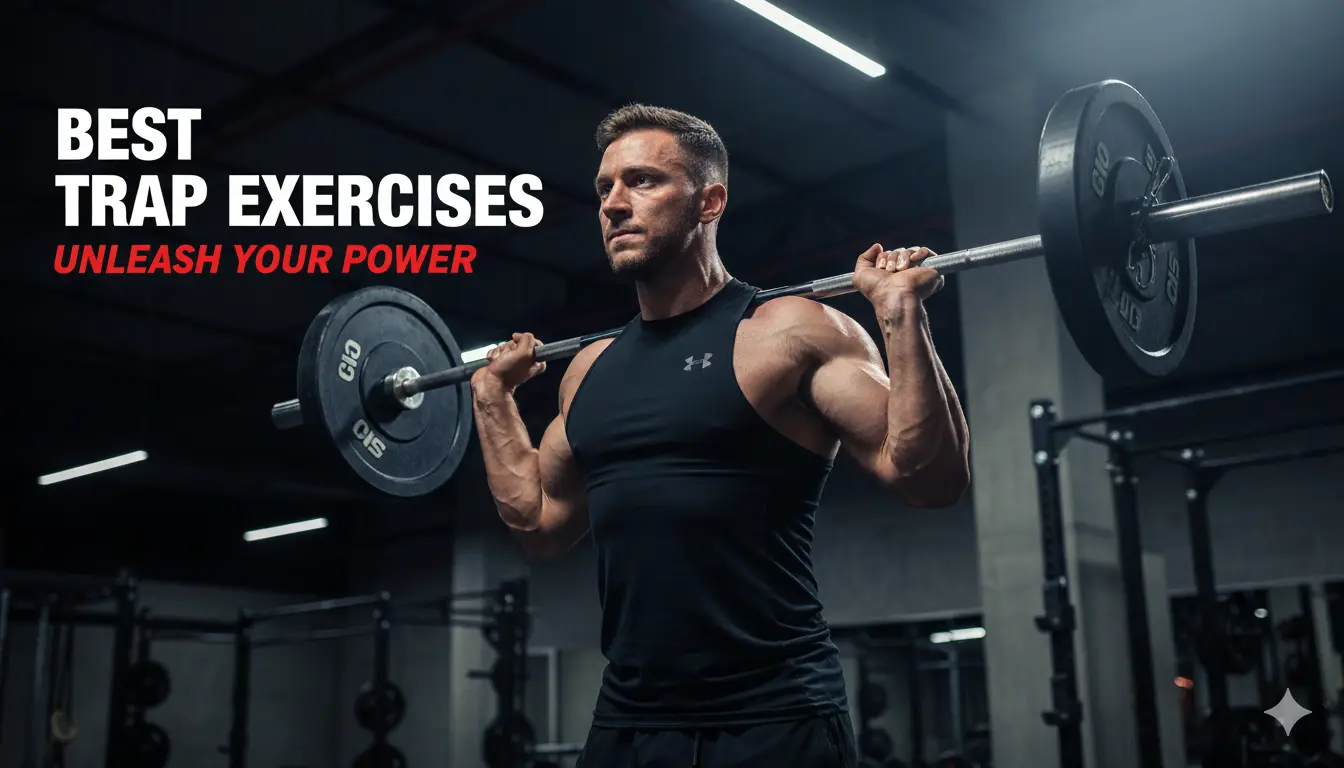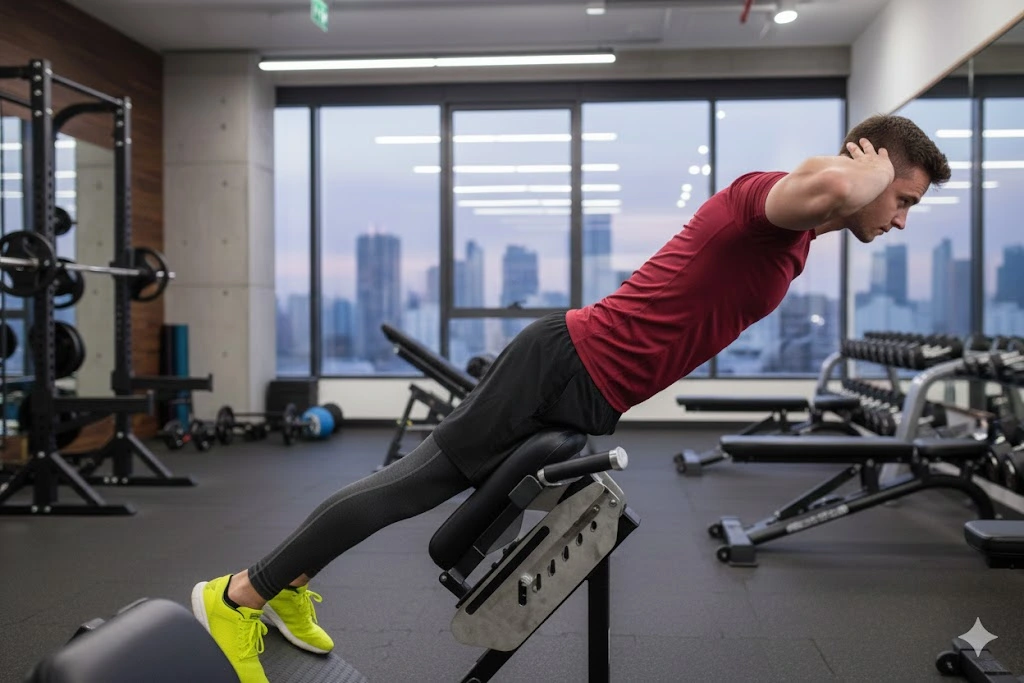Introduction
When you look at someone with a strong, powerful body, the first thing you usually notice is their upper frame, broad shoulders, thick neck, and wide back. What makes this possible is the trapezius muscle, commonly known as the traps. These muscles sit at the very top of your back, stretching from the base of your skull down to the middle of your spine. They connect your neck, shoulders, and back together, and when developed, they create the iconic “yoked” look seen in athletes, wrestlers, and bodybuilders.
But the traps are not just about looks. They serve a much deeper purpose in movement, posture, and strength. Strong traps stabilize the neck, assist in pulling and lifting, and protect your shoulders from injury. For a full routine that pairs trap work with rows and face pulls, see this best back workout gym plan. If your traps are weak, you might notice problems like slouching, stiffness in the neck, or even chronic upper trap pain. Many people who sit long hours at a desk also complain of tight shoulders, try these bodyweight shoulder exercises to open up and stabilize the area. which is often caused by poor trap strength.
The great news is that traps respond quickly to training. With the right trap muscle exercises, you can build strength and size in a relatively short time. The challenge is choosing the right exercises. Many lifters only stick to barbell shrugs, but that only develops the upper portion of the traps. To build balanced, strong, and healthy traps, you need to train the upper traps, mid traps, and lower traps. This means using a mix of barbell, dumbbell, cable, and bodyweight trap exercises.
In this detailed guide, we’ll walk you through the best trap exercises step by step. You’ll learn how to do upper trap workouts for size, lower trap exercises for posture, and even a traps workout at home using dumbbells or resistance bands. We’ll also cover how to achieve huge traps quickly, how to stretch them properly, and how to create a balanced trapezius workout plan using some of the most effective trapezius exercises. By the end, you’ll know exactly which trapezius exercises help you grow evenly and maintain strong posture.
Table of Contents
Anatomy of the Trapezius Muscle
If you want to build big traps, you first need to understand how the trapezius muscle works. Many beginners think the traps are just the muscles you use when you shrug, but the trapezius is far more complex. It’s a broad, diamond-shaped muscle that covers almost the entire upper back. It starts from the base of your skull, runs across the shoulders, and ends around the middle of your spine. Because it covers such a large area, the traps are divided into three regions: upper, mid, and lower. Each of these has a unique function and requires specific traps exercises to fully develop. When you follow a structured traps muscle workout, you target each section properly and avoid imbalance.
The upper traps are the most visible part of the muscle. These run from the back of your neck to the top of your shoulders. Whenever you shrug your shoulders, you are using your upper traps. Strong upper traps are what give bodybuilders that “yoked” look. Exercises like barbell shrugs, dumbbell shrugs, cable upright rows, and trapezius barbell pulls are great for building this area. If your goal is size and thickness in the upper body, upper traps exercises should be a major part of your routine. Adding these movements into your overall traps muscle workout ensures balanced growth, and combining them with other targeted traps exercises helps build a strong, complete upper back.
The mid traps are located between the shoulder blades. Their main role is to pull your shoulders back and keep your posture upright. Weak mid traps can cause rounded shoulders and back pain, especially if you spend a lot of time sitting. Strength-training with movements that work the entire back is essential, here’s a great article on Effective exercises for building a strong back.
That’s why including mid trap exercises like bent over rear delt flys or rowing variations is essential. Building mid traps not only improves strength but also helps balance your physique, preventing the forward-leaning posture many people struggle with. A great mid-trap row is the bent-over two-dumbbell row (palms in) for scapular retraction
The lower traps are often the most neglected. They sit near the middle of your back, just below the shoulder blades. Their main job is to stabilize your shoulder blades during pressing or overhead movements. If your lower traps are weak, you may struggle with shoulder pain or instability.
Balance strength with mobility using these 15 best lower back stretches to keep the thoracic area moving
The takeaway here is simple: if you only train the upper traps with shrugs, you’ll create an imbalance. For complete development, your trap muscle workout must target all three parts, upper, mid, and lower. That’s how you build strong, balanced, and pain-free traps.
Best Trap Exercises for Mass & Strength
When it comes to trap growth, not all exercises are created equal. The best trap exercises are the ones that allow you to overload the muscles with heavy resistance, while also giving a good range of motion. For mass and strength, you want to combine barbell trap exercises, dumbbell trap exercises, and cable movements. This ensures that your traps are challenged from different angles, especially when you’re following a structured trapezius muscle workout.
Barbell Shrugs
This is the classic and most powerful trap exercise. The barbell shrug directly targets the upper trapezius and lets you handle very heavy weights. To perform it, hold a barbell in front of your thighs, grip shoulder-width apart, and shrug your shoulders as high as possible. Hold the contraction for a second, then slowly lower. Avoid rolling your shoulders, as that reduces tension and risks injury. Done consistently, barbell shrugs for traps will give you thickness and mass across the top of your back.
Dumbbell Shrugs
Dumbbells give you more freedom of movement compared to barbells. Hold a pair of dumbbells by your sides, keep your chest tall, and shrug your shoulders. You can go straight up and down or even slightly rotate backward for better contraction. Want to target all parts of the trapezius? This external guide, Trap Exercises For Bigger and Stronger Shoulders, covers upper, mid, and lower traps effectively.
Cable Upright Row
The cable upright row is an underrated trap builder. Unlike free weights, the cable keeps constant tension on your muscles throughout the movement. Hold the bar with a close grip, pull it straight up toward your chest, and keep your elbows higher than your wrists. This exercise not only builds traps but also hits the shoulders, making it a great compound exercise for traps and overall upper body strength.
Farmer’s Carry
Also called the farm carry exercise for traps, this move is deceptively simple but brutally effective. Grab two heavy dumbbells or kettlebells, stand tall, and walk for distance or time. Your traps, shoulders, and grip strength will be on fire. This functional exercise also improves posture and builds endurance. Level up your carry grip with the plate pinch exercise.
Bent Over Rear Delt Fly
Although often considered a rear delt exercise, the bent over fly heavily engages the mid traps. To do it, bend at the hips, keep a flat back, and raise dumbbells to the side like wings. Squeeze your shoulder blades together at the top. This strengthens the mid traps, improves posture, and balances the heavy work done by the upper traps.
By combining these five exercises, barbell shrugs, dumbbell shrugs, cable upright rows, farmer’s carries, and bent-over rear delt flys, you create a powerful trap muscle workout that stimulates all parts of the trapezius. This combination becomes even more effective when structured as a balanced trapezius muscle workout, ensuring every section grows evenly. With consistency, this targeted trapezius muscle workout helps build strength, size, and better posture.
Lower Trap Exercises for Better Posture
Most people who train with traps only focus on the upper portion. They load a barbell, do endless shrugs, and think that’s enough. While shrugs do build mass, they don’t cover the whole trapezius muscle. The lower traps are often ignored, and this leads to posture problems, shoulder pain, and muscular imbalance. If you’ve ever noticed yourself slouching forward or struggling with overhead movements, chances are your lower traps are weak. Strengthening them will not only make your back look more balanced but also protect your shoulders and spine.
The lower traps run from the middle of your shoulder blades down toward the spine. Their main job is to stabilize the scapula (shoulder blade). Every time you lift your arms overhead, your lower traps work behind the scenes to keep the shoulder joint stable. Without strong lower traps, even simple moves like push presses or pull-ups can feel shaky. Worse, weak lower traps often lead to overactive upper traps, which create neck tightness and stiffness. This is why building the lower trapezius is critical for both performance and posture, and why including targeted trapezius muscle exercises becomes so important.
Here are some of the best lower trap exercises you should add to your workout:
- Prone Y-Raise: This is one of the most effective lower trap workouts. Lie face down on a bench or the floor. Extend your arms overhead in a “Y” shape. Slowly raise your arms off the ground, squeezing your shoulder blades together. Keep your thumbs pointing upward. This small but powerful move activates the lower traps while also improving shoulder stability.
- Trap 3 Raise: A variation of the Y-raise, the trap 3 raise focuses on scapular control. It involves lifting your arms out at an angle while maintaining tension in the lower traps. Physical therapists often recommend this move for people with shoulder issues because it restores balance between the upper and lower trapezius.
- Scapular Pull-Ups: Hang from a pull-up bar and, without bending your elbows, pull your shoulders down and back. Hold briefly, then release. This strengthens the lower traps and also improves control over the shoulder blades.
- Barbell Pulls with Control: Performing barbell rows with slow, strict form helps engage the lower traps when you squeeze the shoulder blades together at the top.
By including these exercises, you ensure your trapezius is balanced. Strong lower traps improve posture, reduce the risk of rotator cuff injuries, and give you a better foundation for heavy lifts. Many lifters skip these because they don’t give the same “pump” as shrugs, but in the long run, lower trap strength separates athletes with stable shoulders from those constantly battling pain. This is why some of the best trapezius exercises always include movements that target stability, not just size.
When planning your trap workout, don’t just focus on building size. Include lower trap exercises to create both strength and stability. That’s how you’ll stand tall with confidence and avoid nagging injuries, especially when your routine includes the best trapezius exercises for posture and shoulder health.
Upper Trap Exercises for Size & Power
If you want to build that thick, muscular look across the top of your shoulders, you need to focus on the upper trapezius. These muscles sit right between your neck and shoulders, and when developed, they give you the famous “yoked” look. Many athletes, wrestlers, and powerlifters are recognized by their big traps, and the secret is heavy, regular exercises for traps focused on the upper region.
The upper traps are responsible for shrugging your shoulders upward and stabilizing the neck. They’re also active in pulling and carrying movements. Since they can handle a lot of weight, they grow best with heavy, loaded exercises for traps. Here are the top upper trap workouts:
- Barbell Shrugs for Traps: The ultimate size builder. Load a barbell, stand tall, and shrug your shoulders as high as you can. Keep the movement short and controlled. Go heavy, but make sure you still pause at the top for maximum contraction. This exercise is the foundation for building huge traps fast.
- Dumbbell Shrugs: A great alternative if you don’t have a barbell. Dumbbells give a wider range of motion and allow each shoulder to move independently. This helps fix muscle imbalances and ensures balanced growth. You can also try variations like holding the dumbbells slightly in front of your body for a different angle.
- Cable Upright Row: This exercise hits both the traps and shoulders. Using a cable machine keeps constant tension, which is excellent for muscle growth. Pull the bar upward to chest level, leading with your elbows. Keep the motion smooth and avoid jerking.
- Trapezius Barbell Pulls: These are a combination of a shrug and an upright row. Hold the barbell and pull it upward, keeping elbows slightly bent. It provides both mass and strength benefits for the traps.
- Farmer’s Carry for Traps: Although this is often considered a full-body movement, it’s also one of the most effective trap muscle exercises. Carrying heavy weights forces the upper traps to stay engaged the entire time, building both size and endurance.
The key to building big trap muscles is progressive overload. Increase the weight gradually while maintaining good form. Train upper traps two to three times per week, mixing heavy barbell shrugs with accessory moves like dumbbell shrugs and cable upright rows. For athletes who want explosive power, adding carries and pulls is also important, especially when you’re following good trap workouts that target strength and thickness together.
If you want your upper body to look powerful, don’t skip these exercises. Strong upper traps don’t just look impressive, they protect your neck, stabilize your shoulders, and give you strength in daily life. This is why sticking to good trap workouts consistently makes such a big difference in both size and performance.
Trap Workouts at Home
Not everyone has access to a gym, and that’s perfectly fine. You can still train your traps effectively at home. The key is creativity, using dumbbells. For resistance band routines, check out this Verywell Fit guide on resistance bands.
Bodyweight Trap Exercises
Believe it or not, you can activate your traps without equipment. Try scapular wall slides, where you stand against a wall and slowly raise and lower your arms in a controlled motion. Another option is the push-up plus. At the top of a push-up, push your shoulders forward an extra inch to engage the traps. While these may not build massive traps alone, they’re excellent for mobility and activation, and they pair well with the best exercises for traps when you want a complete routine.
Trap Exercises with Dumbbells
If you own dumbbells, you can create a full dumbbell trapezius workout. Start with dumbbell shrugs, performing 3–4 sets of 12–15 reps. Next, do dumbbell farmer’s carries, grab heavy weights, stand tall, and walk around your space for 30–60 seconds. Finally, add bent-over rear delt flys to strengthen your mid traps. With just a pair of dumbbells, you can cover all three parts of the trapezius.
Resistance Band Trap Workouts
Resistance bands are affordable and highly effective. Try banded upright rows by stepping on the band and pulling upward like a barbell row. You can also do band pull-aparts, which strengthen the mid traps and improve posture. Bands keep constant tension, which makes them surprisingly good for hypertrophy. If you own a glide board, these Total Gym workouts will support both traps and posture.
Household Substitutes
If you don’t have equipment, get creative. Use water jugs or backpacks filled with books for shrugs and carries. Do towel isometric shrugs by holding onto a towel looped under your feet and pulling up hard. The resistance might not be as heavy as gym weights, but the intensity is what matters most.
The beauty of a trap workout at home is that you can fit it into your day easily. No travel time, no excuses. Even 15–20 minutes of focused trap training two to three times a week can build strength and improve posture. Combine dumbbell or band work with bodyweight activation, and you’ll see progress faster than you expect, especially when you choose the best exercises for traps that target both strength and stability.
How to Get Huge Traps Fast
A lot of lifters want to know one thing: how do I build big trap muscles quickly? The truth is, there’s no magic trick, but if you follow the right principles, traps can grow faster than most other muscles. The trapezius responds well to heavy loads, frequent training, and proper recovery. If you want to get huge traps fast, here’s what you need to focus on.
1. Heavy Compound Movements
Your traps love heavy weight. That’s why exercises like barbell shrugs, dumbbell shrugs, and barbell pulls are essential. Load the bar heavily, aim for 8–10 reps, and increase the weight week after week. Don’t be afraid to go heavy, your traps are strong muscles and can handle it. Along with shrugs, add farmer’s carries and rack pulls. These force the traps to stay contracted for longer periods, which is perfect for growth and helps form the foundation of the best traps workout. When you combine these moves with other targeted shoulder trap exercises, you create a complete routine for maximum size and strength.
2. Progressive Overload
To keep your traps growing, you must increase the challenge over time. Add more weight, more reps, or reduce rest periods. For example, if you’re doing dumbbell trap exercises like shrugs, add 5–10 pounds every two weeks. Even small increases make a huge difference in trap development, especially when these progressions are part of the best traps workout. Consistently applying this overload to your routine turns simple movements into highly effective shoulder trap exercises that push your traps to grow stronger and denser over time.
3. Training Frequency
Unlike smaller muscles, traps recover quickly. That means you can train them two to three times per week without overtraining. For example, do upper trap exercises like shrugs on pull day, add mid trap work like rear delt flys on push day, and finish with lower trap exercises like Y-raises on shoulder day. Spreading the work keeps traps activated throughout the week.
4. Nutrition for Growth
Muscles don’t grow without proper fuel. To get big traps, you need a high-protein diet (at least 1.6–2 grams per kilogram of body weight). Combine protein with enough calories to support muscle growth. Foods like chicken, beef, eggs, rice, oats, and nuts are your best friends. Don’t forget hydration, muscles function best when well hydrated.
5. Recovery and Sleep
Your traps won’t grow if you’re not sleeping. Aim for 7–9 hours of quality sleep every night. Use stretching and foam rolling to keep the traps flexible and prevent stiffness. If you push hard in the gym but skip recovery, your traps will stay sore instead of growing, even if you’re doing the best exercises for traps consistently.
6. Avoid Common Mistakes
Many people rush their reps, roll their shoulders while shrugging, or use weights that are too light. Focus on controlled movements. Squeeze at the top of each shrug and hold for one second. That contraction is where the magic happens, especially when you’re performing the best traps exercises with proper form.
If you combine heavy weights, progressive overload, proper diet, and consistent recovery, you’ll see your traps grow faster than ever. Within weeks, your upper body will look thicker, stronger, and more powerful.
How to Stretch and Relieve Upper Trap Pain
Strong traps look great, but if you train them without care, you may run into stiffness and discomfort. Many people complain about upper trap pain, especially if they sit at a desk all day or perform heavy lifting without proper recovery. The traps are very active muscles, and because they connect the neck, shoulders, and spine, tension often builds up there. Thankfully, stretching and mobility work can prevent and even fix most of these issues, especially when balanced with at least one shoulder traps exercise that promotes healthy movement and activation.
Why Upper Trap Pain Happens
Upper trap pain usually comes from two main reasons: overuse or imbalance. Overuse happens when you constantly do upper trap exercises like shrugs, but ignore the mid and lower traps. Imbalance occurs when the upper traps are too tight and the lower traps are too weak. This pulls the shoulders upward and forward, creating neck strain. Poor posture, stress, and long hours of sitting also make the upper traps tighten, which is why adding even one balanced shoulder traps exercise can help restore proper alignment and reduce tension.
Best Stretches for Upper Traps
- Neck Side Stretch: Sit or stand tall, tilt your head to one side, and gently pull with your hand. Hold for 20–30 seconds per side. This relieves tightness in the neck and traps.
- Seated Upper Trap Stretch: Sit on your hand to anchor your shoulder down, then tilt your head to the opposite side. This gives a deeper stretch and is great after barbell shrugs or dumbbell trap exercises.
- Wall Angels: Stand with your back against the wall, arms bent at 90 degrees. Slowly raise and lower your arms like making a snow angel. This stretch improves mobility while opening up the mid and lower traps.
- Thread the Needle Stretch: Get on all fours, slide one arm under the other, and twist your body. This movement stretches the upper back and releases tight spots.
Foam Rolling and Massage
If you have a foam roller, lie on it horizontally across your upper back. Roll slowly, pausing on tender areas. This self-massage technique helps release knots and improve blood flow. A massage ball pressed against the wall also works well for pinpointing sore trap muscles.
Mobility and Balance
Stretching alone isn’t enough. You should also strengthen the lower traps to balance the pull of the upper traps. Add Y-raises and trap 3 raises to your workouts. When the lower traps get stronger, they take pressure off the upper traps, reducing stiffness, which is why a balanced routine is essential for the best trap workout.
By combining stretching, foam rolling, and balanced training, you can keep your traps strong without pain. The goal isn’t just to build big trap muscles, but also to keep them flexible, healthy, and functional for years to come. This long-term approach is what truly creates the best trap workout, giving you both size and durability.
Sample Trap Workout Plan
Now that we’ve gone through the best trap exercises, it’s time to put them into a structured plan. A good trap workout should train the upper traps for size, the mid traps for posture, and the lower traps for stability. By combining heavy lifts with accessory movements, you can build strength and balance. This is exactly how great trap workouts create full development instead of just upper trap size. Below are three sample plans, one for beginners, one for intermediate lifters, and one for advanced athletes, each designed to help you follow truly great trap workouts that build strength from every angle.
Beginner Trap Workout
For beginners, the focus should be on learning proper form and activating all parts of the trapezius. You don’t need heavy weights yet; instead, use moderate resistance and concentrate on controlled movements.
- Dumbbell Shrugs – 3 sets of 12–15 reps
- Farmer’s Carry with Dumbbells – 3 rounds of 30 seconds each
- Bent Over Rear Delt Fly – 3 sets of 12 reps
- Prone Y-Raise (Lower Trap Exercise) – 3 sets of 15 reps
This beginner workout plan gives you a balance between upper, mid, and lower traps while keeping the intensity manageable.
Intermediate Trap Workout
Once you’re comfortable with form, it’s time to increase weight and add more variety. Intermediate lifters should challenge themselves with heavier barbells and cables.
- Barbell Shrugs – 4 sets of 10 reps (go heavy)
- Cable Upright Rows – 4 sets of 12 reps
- Trap 3 Raise (Lower Trap) – 3 sets of 12–15 reps
- Dumbbell Farmer’s Carry – 4 rounds of 45 seconds each
- Scapular Pull-Ups – 3 sets of 8–10 reps
This plan pushes your traps harder and adds exercises for stability and posture.
Advanced Trap Workout
For advanced lifters, the goal is maximum overload and intensity. Heavy weights and supersets are key.
- Heavy Barbell Shrugs – 5 sets of 8 reps
- Rack Pulls (Upper Trap Builder) – 4 sets of 6 reps
- Superset: Rear Delt Fly + Trap 3 Raise – 4 sets of 12 reps each
- Farmer’s Carry with Trap Bar – 4 rounds of 1 minute each
- Barbell Pulls with Control – 3 sets of 10 reps
This plan hits the traps from every angle, combining strength, hypertrophy, and endurance.
Tips for All Levels
- Train traps 2–3 times per week for best results.
- Combine heavy compound moves with isolation work.
- Don’t skip lower trap exercises — they keep your shoulders healthy.
- Focus on squeezing and holding at the top of every rep.
With these plans, you’ll have a clear roadmap for trap development. Whether you’re a beginner starting at home or an advanced lifter in the gym, these workouts will help you build big trap muscles that look powerful and function even better. When you consistently include good trap exercises in your routine, progress becomes steady and noticeable. Over time, combining structured training with a variety of good trap exercises ensures balanced growth, strength, and long-term performance.
FAQs About Trap Exercises
Q1. What are the best trap exercises?
The best trap exercises include barbell shrugs, dumbbell shrugs, cable upright rows, farmer’s carries, and bent-over rear delt flys. These hit the upper, mid, and lower traps.
Q2. Can I build traps at home?
Yes! You can do dumbbell trap exercises, resistance band rows, or even bodyweight moves like the push-up plus. A trap workout at home is effective if done consistently.
Q3. How do I get big traps fast?
Train traps 2–3 times per week, lift heavy with shrugs and carries, eat enough protein, and focus on recovery. Progressive overload is key to building big trap muscles.
Q4. What’s the difference between upper and lower trap exercises?
Upper trap exercises like shrugs build size and thickness. Lower trap exercises like Y-raises improve posture and shoulder stability. Both are important for balance.
Q5. How do I relieve upper trap pain?
Do stretches like neck side stretch, seated upper trap stretch, and wall angels. Foam rolling also helps reduce tightness after heavy trap workouts.
Conclusion
The trapezius is one of the most powerful muscles in your body, yet it’s also one of the most overlooked. Too many people spend all their energy on the chest, arms, or abs and forget the traps. But strong traps are more than just for looks, they give you posture, shoulder stability, and real-world strength. Whether you’re carrying groceries, lifting heavy weights, or just standing tall, the traps play a huge role in how strong and confident you look and feel.
This is why adding targeted exercises for shoulders and traps becomes essential, especially if you want long-term strength and healthier movement. And when you combine these with smart workouts for traps, you create a complete foundation for upper-body power. Throughout this guide, we’ve broken down everything you need to know: the best trap exercises like barbell shrugs, dumbbell shrugs, cable upright rows, farmer’s carries, and bent-over rear delt flys; how to train the upper, mid, and lower traps for balance; and even how to build traps with a home workout.
We’ve also covered tips on how to get huge traps fast, how to stretch them to avoid pain, and full trap workout plans for beginners, intermediates, and advanced lifters. By combining the right exercises for shoulders and traps with structured workouts for traps, you ensure steady growth and balanced development. With time, these workouts for traps help you build size, improve posture, and enhance daily performance.






4 Responses
This is a topic close to my heart cheers, where are your contact details though?
I’d have to examine with you here. Which is not one thing I usually do! I take pleasure in reading a post that may make folks think. Additionally, thanks for permitting me to comment!
As a Newbie, I am constantly exploring online for articles that can benefit me. Thank you
Hi this is kinda of off topic but I was wondering if blogs use WYSIWYG editors or if you have to manually code with HTML. I’m starting a blog soon but have no coding knowledge so I wanted to get advice from someone with experience. Any help would be greatly appreciated!